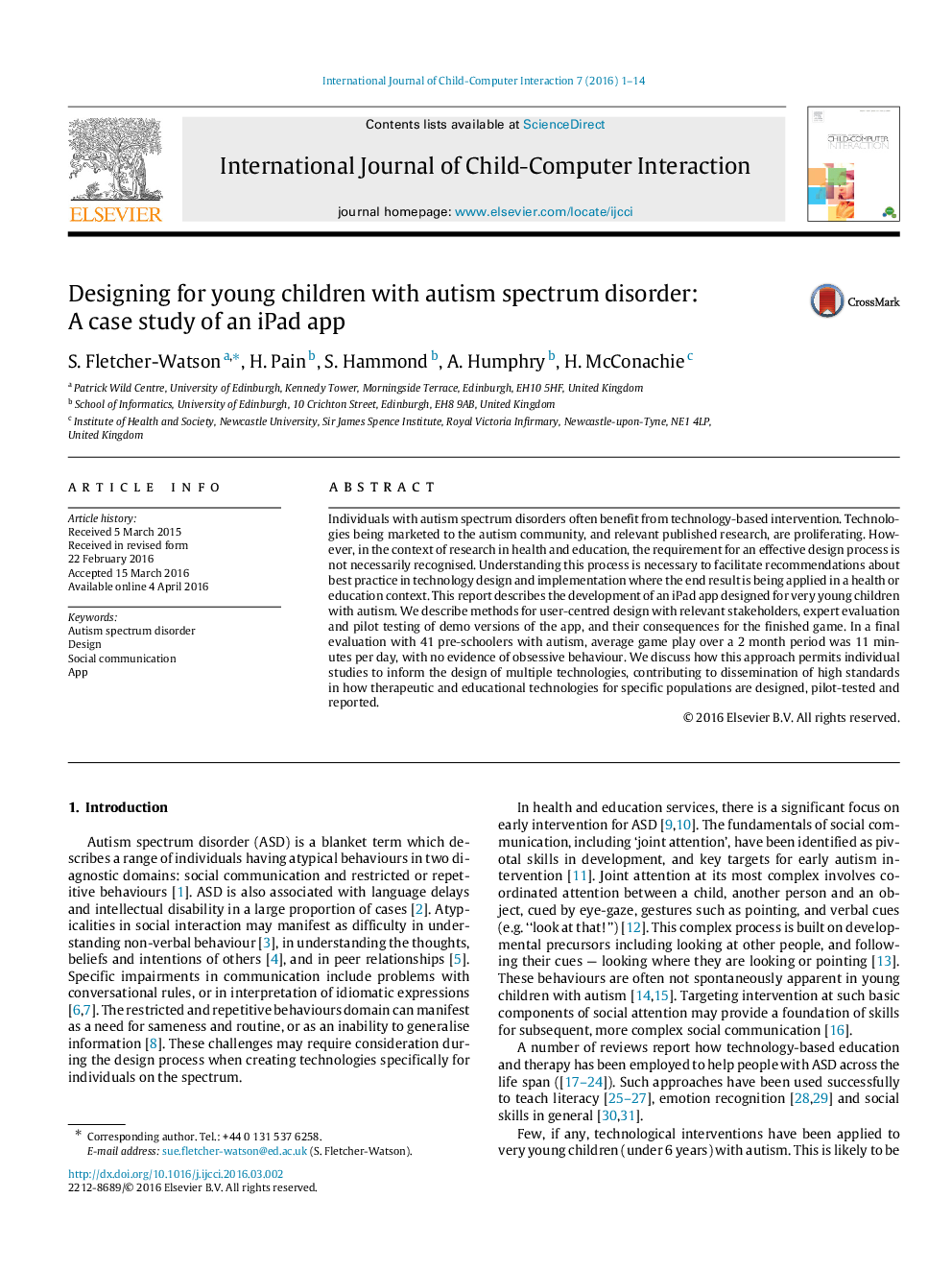| Article ID | Journal | Published Year | Pages | File Type |
|---|---|---|---|---|
| 324147 | International Journal of Child-Computer Interaction | 2016 | 14 Pages |
Individuals with autism spectrum disorders often benefit from technology-based intervention. Technologies being marketed to the autism community, and relevant published research, are proliferating. However, in the context of research in health and education, the requirement for an effective design process is not necessarily recognised. Understanding this process is necessary to facilitate recommendations about best practice in technology design and implementation where the end result is being applied in a health or education context. This report describes the development of an iPad app designed for very young children with autism. We describe methods for user-centred design with relevant stakeholders, expert evaluation and pilot testing of demo versions of the app, and their consequences for the finished game. In a final evaluation with 41 pre-schoolers with autism, average game play over a 2 month period was 11 minutes per day, with no evidence of obsessive behaviour. We discuss how this approach permits individual studies to inform the design of multiple technologies, contributing to dissemination of high standards in how therapeutic and educational technologies for specific populations are designed, pilot-tested and reported.
